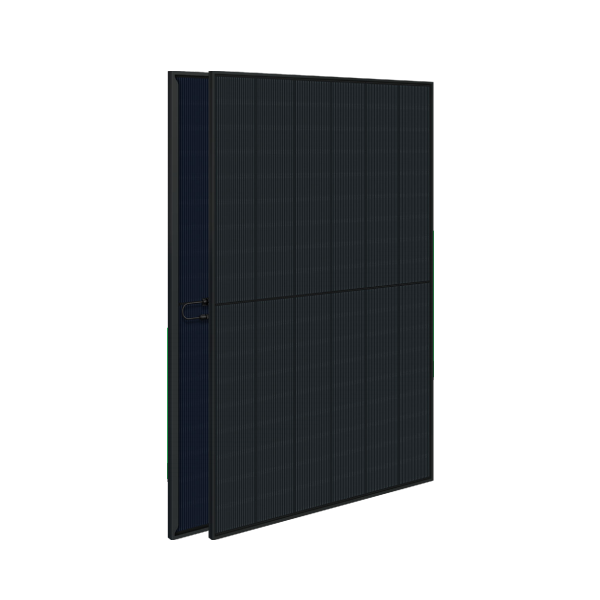Factory Integration with Adding Solar Panels for Homes
Product Main Parameters
| Power Range | 440~460W |
|---|---|
| Power Sorting | 0~3% |
| Max Module Efficiency | 23.0% |
| First Year Power Degradation | ≤ 1.0% |
| Year 2-30 Power Degradation | ≤ 0.4% |
Common Product Specifications
| Outer Dimensions (L x W x H) | 1762 x 1134 x 30 mm |
|---|---|
| Cell Type | n-type mono-crystalline |
| No. of Cells | 108 (6*18) |
| Module Weight | 21.5 kg |
Product Manufacturing Process
Drawing from authoritative research, the manufacturing of Chint PVSTAR’s photovoltaic modules involves advanced fabrication processes aimed at enhancing efficiency and durability. The factory employs cutting-edge TOPCon technology, which significantly optimizes the photoelectric conversion rate, making it a sustainable choice for energy production. This innovative approach ensures minimal environmental impact while maintaining high output performance standards. The integration of Zero-busbar (ZBB) technology further streamlines production, reducing material waste and increasing production speed. Advanced quality control measures are in place to maintain the high standards synonymous with the Chint brand, ensuring reliability and longevity in all modules produced.
Product Application Scenarios
Chint PVSTAR's solar modules are designed for diverse application scenarios, including residential rooftops, commercial facilities, and balcony installations. According to industry insights, solar panel installations greatly benefit urban environments by transforming unused rooftop spaces into efficient energy producers. The flexibility of on-grid and off-grid operations allows users to adapt installations to their specific energy demands. Furthermore, the integration of smart monitoring systems enhances user experience by providing real-time data on energy production and consumption, ensuring optimal performance and energy savings. This adaptability is crucial in meeting the varied energy needs of modern urban settings.
Product After-Sales Service
Our after-sales service includes comprehensive support, from installation guidance to ongoing maintenance. A dedicated service team ensures all systems operate at peak efficiency, providing technical assistance and troubleshooting as needed.
Product Transportation
The transportation of solar panels is handled with meticulous care, ensuring that each unit arrives at its destination in optimal condition. Packaging is robust, with appropriate cushioning to prevent damage during transit.
Product Advantages
- High efficiency and reliable energy output
- Advanced technology for enhanced durability
- Flexible application scenarios
- Smart monitoring capabilities
- Robust after-sales support
Product FAQ
1. What is the optimal angle for installing solar panels?
Answer: The optimal angle varies based on your geographic location to maximize exposure to sunlight. Typically, it’s advised to align panels to your latitude angle.
2. How long do solar panels last?
Answer: Solar panels typically last between 25 to 30 years, with efficiency dropping slightly after this period.
3. Do I need direct sunlight to generate electricity?
Answer: While direct sunlight maximizes efficiency, solar panels can still generate electricity on cloudy days, albeit at reduced levels.
4. What maintenance do solar panels require?
Answer: Solar panels require minimal maintenance, usually just periodic cleaning to ensure optimal sunlight absorption.
5. Can I add more panels to an existing system?
Answer: Yes, systems can often be expanded, though it’s recommended to consult with a professional to ensure compatibility.
6. How does net metering work?
Answer: Net metering allows you to sell excess electricity back to the grid, providing a credit on your electricity bill.
7. Are solar panels environmentally friendly?
Answer: Yes, solar panels produce clean energy, greatly reducing carbon emissions compared to fossil fuels.
8. How do I choose the right solar panel for my home?
Answer: Factors include available roof space, energy needs, and budget. Consulting with a professional can help tailor the best solution.
9. Is it possible to go off-grid with solar power?
Answer: It’s possible, though it typically requires significant investment in battery storage to ensure energy availability at all times.
10. What financing options are available for solar panel installations?
Answer: Many governments offer incentives or financing plans to offset installation costs, including tax credits and rebates.
Product Hot Topics
1. The Future of Solar Panel Technology
The future of solar technology looks promising, with continuous advancements in efficiency and energy storage solutions at the factory level. As researchers develop more efficient materials and manufacturing techniques, the cost of adding solar panels is expected to decrease further, making renewable energy accessible to more consumers worldwide. This affordability, coupled with increasing concerns about environmental impact, is accelerating the adoption of solar technology globally.
2. Benefits of Solar Panels in Urban Environments
Solar panels are particularly beneficial in urban settings where space is limited. By adding solar panels to high-rise buildings and factory rooftops, cities can significantly reduce their carbon footprint and move towards sustainability. The integration of solar power into the urban fabric also supports local grid systems by providing decentralized power sources, easing the strain on traditional electricity infrastructures. This shift not only benefits the environment but also enhances energy security and independence for urban populations.
Image Description
There is no picture description for this product









